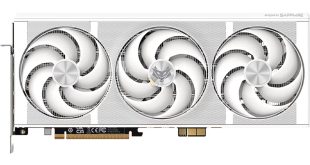At KitGuru when we test graphics cards we try our best to build a test system that suits the intended target audience. As an example when we reviewed the HIS 5770 Ice Q 5 we paired it with a budget level Athlon II 255 CPU and an entry level AM3 motherboard. Since the 5850 is a more powerful card our test system will be built using a Gigabyte GA-890GPA-UD3H v2.0 Crossfire ready motherboard and an overclocked HexaCore AMD Phenom II X6 1055T processor running at 3.5 GHz. Our OS drive in this build is a 64GB Kingston V-Series Rev2 SSD and files are stored on a 500 GB WD SATA II drive.
The test system is built from scratch with a fresh Windows 7 Professional install, all patches have been installed via Windows Update. We have chosen to use our Asus 5850 as a reference model in this review. All of our testing will include results from both cards generated by what speed they are clocked to out of the box.
Test System
Gigabyte GA-890GPA-UD3H v2.0
HexaCore AMD Phenom II X6 1055T
HIS 5850 Turbo 1GB PCI-e 765/1125 MHz
Asus EAH5850 1GB PCI-e 725/1000 MHz
8GB G Skill DDR III 1600
Corsair HX850 modular PSU (80 Plus Silver rating)
NZXT Phantom Full Tower
Kingston 64 GB V-Series SSD (OS drive)
Western Digital 500 GB SATA II(Storage)
LG 16X DVDRW optical drive
Samsung SyncMaster 245BW
Software
Windows 7 Professional x64
FRAPS Professional x64
Catalyst 10.7
3DMark Vantage
Unigine Heaven Benchmark 2.1
Games
Aliens vs Predator
Crysis Warhead
Dirt 2
Metro 2033
Far Cry 2
Left 4 Dead 2
All the latest bios updates and drivers are used during testing. We perform under real world conditions, meaning KitGuru test all games across five closely matched runs and average out the results to get an accurate median figure.
Our minimum frame rate game graphs have three main zones. These are sampled over a specific 30 interval period of time and then mapped into a chart. These are handy reference guides to detail worst case performance of the product being reviewed. When we test video cards we try to find the best combination of resolution and image quality settings while still maintaining playable frame rates.
Over 30fps is the zone most people want at all times, this means perfectly smooth frame rates with no hitching.
Between 30fps and 25fps is the KitGuru ‘Playable’ zone, although some people might notice occasional stuttering in specific scenes.
Under 25fps is classed as the KitGuru ‘Danger Zone’ which means that the game experience will be less than impressive. Settings and/or resolution would need lowered to help smooth out the frame rate.
 KitGuru KitGuru.net – Tech News | Hardware News | Hardware Reviews | IOS | Mobile | Gaming | Graphics Cards
KitGuru KitGuru.net – Tech News | Hardware News | Hardware Reviews | IOS | Mobile | Gaming | Graphics Cards




Looks like a good board, HIS seem to be making a name for t hemselves lately
Good review, shame they didnt allow voltage increases on this card, it would overclock much better.
HIS arent very well known here, but they have a full range of cards for sale and they seem to be well designed.
Cant seem to see it for sale locally here for some reason.
Not a bad looking card, but the 5850 seems to be a bit of a not so good deal now with the 460 out.
Seems a good card, but nothing specatular.
Anyone think this is a good buy now,. HD5850 is a little overprice now I think, well it is here.
HIS, never heard of them 😉
Well this seems a solid, if someone bland card by todays standards. noise levels are decent and performance is good, overclocking is poor though and thats what tends to sell specific 5850s.
Powercolor make a good 5850 which seems quieter and a little better value, but this is good too.
I like this card seems to be competitively priced in Europe.
Shame about the voltage support, it would have possibly reached 5870 performance if it handled it.